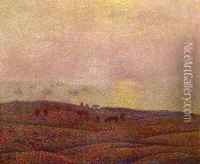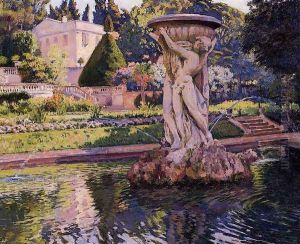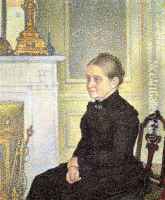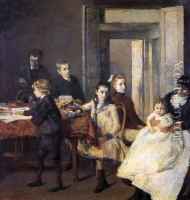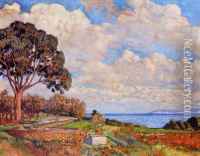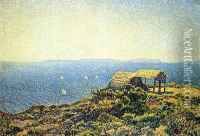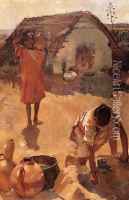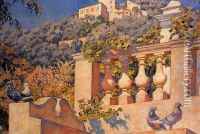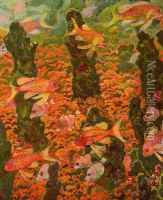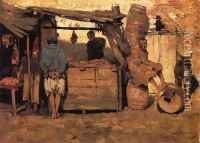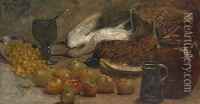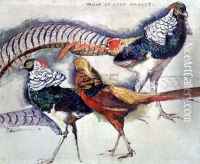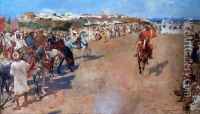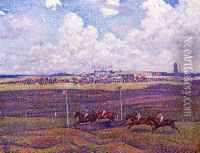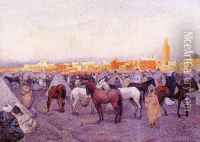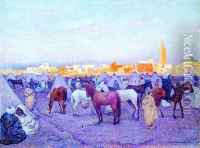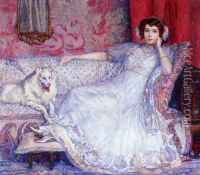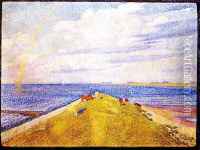Theo van Rysselberghe Paintings
Theo van Rysselberghe was a pivotal figure in the European art scene at the turn of the 20th century, primarily known for his contributions to the Neo-Impressionist movement. Born on November 23, 1862, in Ghent, Belgium, van Rysselberghe showed an early inclination towards art, which was nurtured through his studies at the Royal Academy of Fine Arts in Ghent and later in Brussels. His initial works were influenced by the Realist and Impressionist movements, depicting everyday scenes with a keen eye for light and color.
In the mid-1880s, van Rysselberghe's artistic direction took a significant turn after he was introduced to the Pointillist technique by Georges Seurat, a method that involved applying paint in small dots of pure color, which would blend in the viewer's eye to create vibrant, luminous effects. This technique profoundly influenced van Rysselberghe, and he became one of its most fervent advocates, helping to spread Neo-Impressionism beyond France.
Van Rysselberghe was also a founding member of Les XX (Les Vingt), a group of twenty avant-garde artists in Belgium who sought to promote new artistic expressions and ideas. Through Les XX, he facilitated exhibitions that introduced Belgian audiences to the works of Vincent van Gogh, Paul Gauguin, and the Symbolists, significantly influencing the direction of Belgian art.
Throughout his career, van Rysselberghe remained deeply involved in the artistic community, forming close friendships with other artists and writers, including Emile Verhaeren and André Gide. His work continued to evolve, and in his later years, he shifted towards a more fluid, less rigid application of the Pointillist technique, focusing more on Mediterranean landscapes, seascapes, and portraits, which showcased his mastery of color and light.
Theo van Rysselberghe died on December 14, 1926, in Saint-Clair, Var, France. His legacy lives on through his vibrant paintings, which continue to be celebrated for their technical precision and emotive power, bridging the gap between Impressionism and the emerging modernist movements of the early 20th century.
